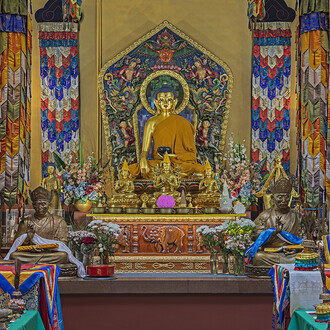The exhibition devoted to the culture of Armenia and Georgia illustrates the cultural history of Transcaucasia from the earliest times to the 19th century.
The art of Armenia in room 63 is represented by the monuments of art from the 1st to the 19th centuries. The largest number of items reflecting the culture of medieval Armenia include the toreutic works of the Kilikan Armenian Kingdom of the 12th- 13th centuries, fragments of architectural ornamentation of the 11th to the 14th centuries, and a “khachkar”, also known as an Armenian cross-stone. Occupying an important part in the exhibition are the examples of medieval mural paintings and the collection of illuminated manuscripts.
In room 62 devoted to the culture and art of Georgia, known in ancient times as Iberia-Kartli and Colchis, are exhibited the ancient objects of art found in the burial-ground in the village of Bori (2nd – 3rd centuries), the works of the medieval silversmiths of Georgia including the details of the icon frames and the processional cross of the 15th century, as well as the examples of architectural stone carving of the 11th to the 15th centuries. The exhibited items also include the original silver wine-drinking vessels and the 19th-century artistic weapons.
















